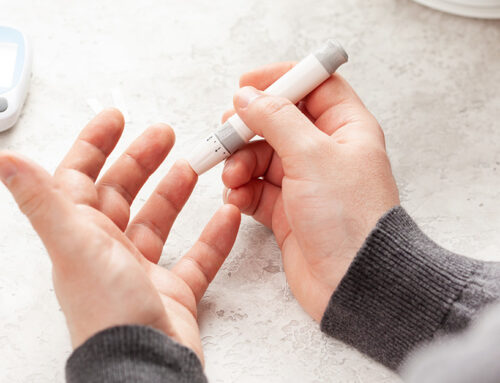
When most people hear the term “coffee enema” they think, “Oh, gross!” But before you click the back button, consider the following; coffee enemas have been known to:
- greatly relieve chronic pain
- help boost energy levels
- relieve depression
- improve mental clarity and sluggishness
- ease die-off symptoms during cleanse regimens
- aid elimination of parasites and sludgy buildup from years of slow intestinal action
- help improve digestion
The health benefits of coffee enemas can make them a useful adjunct to your Hashimoto’s hypothyroidism management protocol.
Enemas have been a regular part of medical treatment around the world since at least 1500 BC. Coffee enemas are believed to have been created in the 1920s; in fact, they were listed as a standard of care in the Merck Manual until 1977, when they were removed due to lack of room. Coffee enemas are an integral part of the renowned Gerson cancer therapy, and the National Institutes of Health recently allocated $1.4 million for research on the use of coffee enemas and dietary therapy for treating pancreatic cancer.
Why Do Coffee Enemas When You Have Hashimoto’s Hypothyroidism?
As anyone who has taken on managing Hashimoto’s hypothyroidism knows, the modern environment is hard on our bodies. We cope with environmental toxins in our air, water, food, and the many products we use each day. It’s simply impossible to avoid all toxins. The liver is one of the main organs in charge of detoxification, metabolizing many toxins and escorting them via bile to the gallbladder, where they are then sent to the colon for removal. The catch: bile is reused up to ten times. In the past when our environment was cleaner, this recycling system worked fine. Today, however, the toxic burden is so great that it may overwhelm this system, increasing the body’s toxic load and hence the risk for disease.
The Most Powerful Benefit of the Coffee Enema: Detoxification!
In addition to the long list of benefits above, coffee enemas are known to be a powerful tool for detoxification:
- Liver Detoxification: The caffeine in coffee dilates the liver’s bile ducts, facilitating elimination of toxins trapped in the liver.
- Blood Purification: The lower colon is designed to re-absorb liquids from waste. Here, two palmitic acids in coffee — kahweol and cafestol palmitate — are absorbed into the portal vein system, which leads directly to your liver. These palmitic acids boost one of the body’s most powerful detoxifier, the glutathione s-transferase (GST) enzyme system, by up to 700 percent! GST captures and metabolizes toxins and binds them with reduced glutathione (the body’s master antioxidant) in the liver and escorts them out of the body via the colon. All of your blood passes through the liver every three minutes. Because a coffee enema is typically held for 15 minutes, it facilitates the elimination of toxins, purifies the blood, and prevents the reabsorption and recycling of toxic bile. Who wouldn’t want that?
- Improves Tone and Motility of the Colon: It is believed the theophylline compound in coffee causes blood vessels in the colon to dilate, enhancing blood flow and improving muscle tone and motility. In addition, the enemas help neutralize common toxins in liver and intestinal tissue, supporting repair and regeneration and improving function.
These benefits can facilitate the management of Hashimoto’s hypothyroidism.
I Don’t Drink Coffee…Will I Get A Coffee Buzz?
Only the palmitic acid and other valuable compounds are carried to the liver from a coffee enema. The coffee itself remains in the lower colon until it is eliminated. A coffee enema engages different metabolic pathways than drinking it. Most people who don’t tolerate coffee have no problem with coffee enemas, and, in fact, many say they produce a calm, clear mind.
If you have Hashimoto’s hypothyroidism and your health is very fragile or you are very sensitive, you may want to start with a very diluted coffee solution in case the detox overstimulates your system.
Coffee Enema Cautions and Tips When You Have Hashimoto’s Hypothyroidism
Potential risks can be averted with common sense and attention:
- No hot coffee: The rectum has no nerves after ¾ inch, so each time you prepare an enema, make sure to dip your entire hand into the water for a full 5 seconds to test the temperature. The water should be warm, not hot.
- Physical damage to the rectum: The tissues in the rectum are delicate. Use a rounded enema tip, move slowly, and use plenty of lubricant. Only insert the tip as far as your little finger’s length, or less.
- Consider minerals: When doing coffee enemas regularly, you are not recycling bile salts (minerals) as much as before. Increase mineral rich foods and consider mineral supplements.
- Choose organic coffee: Many countries still grow coffee using chemicals banned in the U.S.. Additionally, instant coffee can be contaminated with gluten. Use organic coffee only. Look for coffees that have higher levels of the beneficial active compounds.
- Use a non-toxic setup: Use a metal bucket or silicone bag and silicone tubing. The acidity of coffee can leach toxins from a rubber or plastic enema bag or tubing. Seeking Health offers non-toxic stainless steel and silicone enema kits.
Okay, So How Do I Do a Coffee Enema?
Ask my office for detailed directions on how to perform a coffee enema. Some guidance will help make the experience less awkward and more successful. And who knows? You may find yourself becoming an advocate of this time-tested health remedy.
For support on managing your Hashimoto’s hypothyroidism, contact my office.





